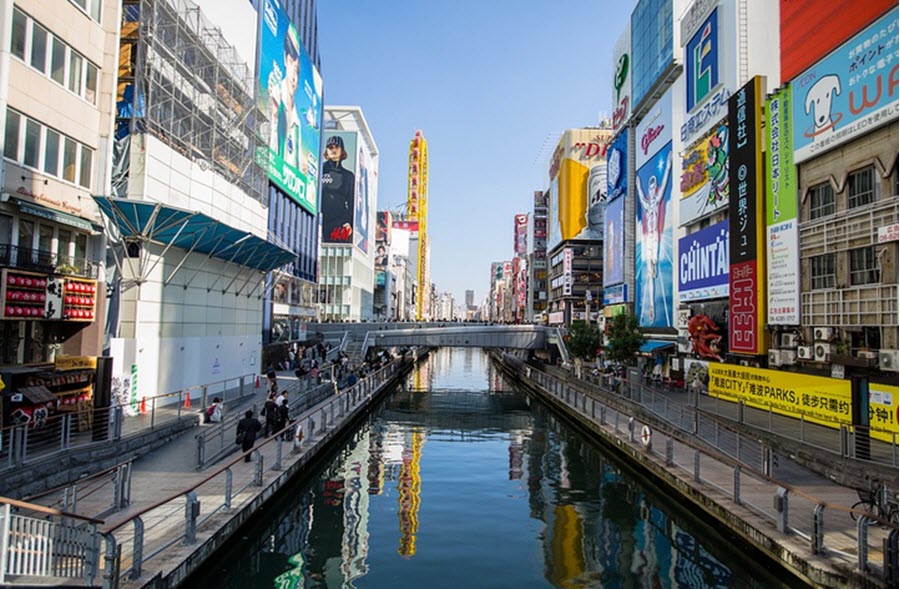The Osaka Exchange (OSE), owned by Osaka Exchange Inc. (株式会社大阪取引所/ Kabushiki-gaisha Ōsaka Torihikijo), is an electronic exchange for equities, stock index futures, stock index options and security options contracts.
While the Tokyo Stock Exchange mainly deals in spot trading, the Osaka Exchange is famous for derivative products, and it is the largest derivatives exchange in Japan in terms of amount of business handled. In 1990-1991 it was even the largest futures market in the world.
Osaka Exchange Inc. is owned by the Japan Exchange Group, Inc., the same company that owns the Tokyo Stock Exchange and the Tokyo Commodity Exchange.

Headquarter
Osaka Exchange, Inc is headquartered at 8-16, Kitahama 1-chome, Chūō-ku, Osaka 541-0041, Japan.
Chūō-ku (中央区, ‘Central Ward’) is one of Osaka´s 24 wards. It is home to Osaka´s financial district, a shopping district and the Osaka Prefecture offices.
Former company name
Osaka Securities Exchange Co., Ltd
株式会社大阪証券取引所 (Kabushiki-gaisha Ōsaka Shōken Torihikijo)
The Nikkei 225 Futures
The internationally well-known Nikkei 225 Futures was introduced at the Singapore Exchange (SGX) in 1986, at the Osaka Securities Exchange (OSE) in 1988 and at the Chicago Mercantile Exchange (CME) in 1990.
Ever since the introduction in September 1988, trading in Nikkei Stock Average Futures (Nikkei 225 Futures) has been very popular at the Osaka Exchange.
In June 1989, trading in Nikkei Stock Average Options (Nikkei 225 Options) commenced at the Osaka Exchange.
21st century milestones
- January 2013: OSE is merged into the Japan Exchange Group
- October 2007: For the first time, a SSE50-Linked Exchange-Traded Fund is listed on the OSE.
- September 2007: An evening-session is introduced for all Stock Index Futures and Options
- August 2007: For the first time, a Gold-Price-Linked Exchange-Traded Fund is listed on the OSE. This is the first time any other type of ETF than the corporate shares-linked ETF is listed on an exchange in Japan.
- June 2000: Trading starts on the Nasdaq Japan Market.
- February 2000: The Private Finance Initiative (PFI) market is established.
History
Background
The history of Osaka being a centre for futures transactions is very long. The first securities exchange in Japan, the Yodoya-Komeichi, was created here, in the southern part of the Yodoyabashi area of Osaka. In 1697, the rice market and its associated securities exchange moved to Dōjima, and the Dōjima Rice Exchange (Dōjima kome ichiba) in Osaka became the centre for the elaborate system of rice brokers which developed in Japan during the Edo period. Futures (Cho-gamai) were introduced in 1716 and recognized by the Japanese government in 1730. In 1773, the whole Dōjima Rice Exchange was officially sanctioned and organized by the shogunate. In 1939, it was absorbed into the Government Rice Agency.
Early days of the Osaka Exchange
The Osaka Stock Exchange was established in 1878. It was independent until June 1943 when it became the Osaka Division of the Japanese Securities Exchange. Japan Securities Exchange suspended operations in August 1945. (Japan surrendered to the Allies on 15 August 1945, soon after the Soviet Union’s declaration of war against Japan and the United States atomic bombing of Hiroshima and Nagasaki.)
The Osaka Securities Exchange is established in the post-war era
The Japan Securities Exchange was formally dissolved in 1947 and a new Securities and Exchange Law was enacted the following year. In April 1949, the Osaka Securities Exchange was created.
A credit transaction system was introduced in 1951 and the bond market re-opened in 1956. This was to be followed by a second section for stocks in 1961 and a convertible bond market in 1970.
Internationalization
The Osaka Exchange became an associate member of the Federation Internationale des Bourses de Valeurs (FIBV) in 1973. In 1982, constitutional restrictions on the membership of foreign securities companies were removed. The following year, the Osaka Exchange became a member of the East Asian Stock Exchanges Conference (EASEC), the organization that we today know as the East Asian and Oceanian Stock Exchanges Federation.
The Osaka Exchange has been a part of the International Options Markets Association (IOMA) since 1991. (Then named IAOECH.)
In 1994, OSE became an affiliate member of the International Organization of Securities Commissions (IOSCO).
A few examples of other important milestones for the OSE
1974: The Computerized Market Information System began operation.
1991: The computer-assisted trading system for stocks began operation.
1991: The country fund market opened.
1992: The Osaka Office of the Japan Securities Depository Centre (JASDEC) began its operation at the Osaka Stock Exchange.
1997: Equity options trading started at the OSE.
1998: In early December, the stock trading floor at OSE closed down for good, as OSE shifted to only use the computer assisted trading system. That same month, the Cross Trading System commenced operations for large block trades, execution at closing price and basket trades.
1998-1999: The New Market Section opened in December 1999, followed by the J-NET Market in January 1999.
1999: Full computerization of trading was achieved in July. The OSE ED-NET electronic disclosure network system was established in October that same year.
This article was last updated on: January 25, 2023
